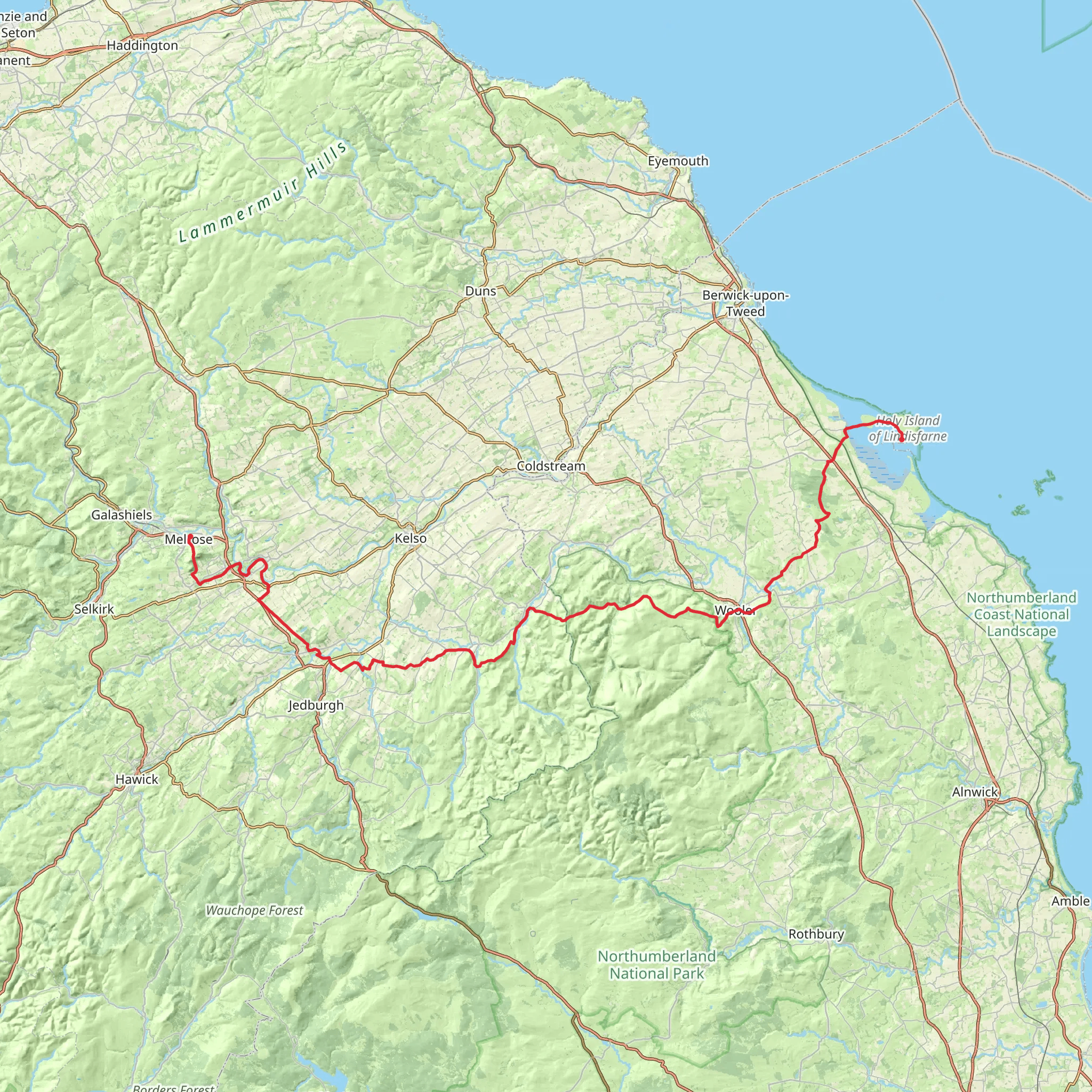Download
Preview
Add to list
More
100.8 km
~6 days
1856 m
Multi-Day
“Embark on St Cuthbert's Way, a historical trek through Scotland's scenic heart and soul.”
St Cuthbert's Way meanders through the picturesque landscapes of the Scottish Borders and Northumberland, covering approximately 101 kilometers (about 63 miles) with an elevation gain of around 1800 meters (nearly 5900 feet). This point-to-point trail is steeped in history, following the footsteps of St Cuthbert, a 7th-century saint, from Melrose Abbey to the Holy Island of Lindisfarne.Getting to the TrailheadThe journey begins near Melrose, a charming town easily accessible by car or public transport. If driving, Melrose is situated off the A68, which is a main route through the Scottish Borders. For those relying on public transport, buses run regularly from Edinburgh and other nearby towns to Melrose. The trailhead is a short walk from the town center, near the historical Melrose Abbey.Historical Significance and LandmarksAs you set out from Melrose, the trail takes you past the Eildon Hills, which are closely associated with legends of King Arthur. The path then leads you through a mix of farmland, woods, and moorland, offering a glimpse into the region's rich agricultural heritage.Crossing into England, the trail winds through the Northumberland National Park, providing stunning views of the Cheviot Hills. The path follows the River Tweed and later the River Till, guiding hikers through a landscape that has witnessed centuries of history, including Roman occupation and border conflicts.One of the most significant landmarks is the crossing of the River Tweed at the Union Chain Bridge, a historic suspension bridge near Horncliffe. As you approach the final stretch of the trail, the dramatic outline of Lindisfarne Castle on Holy Island becomes visible, signaling the end of your journey.Flora and FaunaThe trail offers an opportunity to experience the diverse wildlife of the region. Birdwatchers may spot curlews, oystercatchers, and the occasional peregrine falcon. The woodlands and hedgerows are home to a variety of small mammals and insects, while the rivers and streams support otters and salmon.Navigation and PreparationHikers should prepare for a range of weather conditions and carry appropriate gear. The trail is well-marked, but carrying a map or using a navigation tool like HiiKER is recommended to stay on track. It's also advisable to check the tide times for the causeway crossing to Holy Island, as it can be submerged twice a day.Accommodation and SuppliesThere are several small villages and towns along the route where hikers can find accommodation, ranging from campgrounds to B&Bs. It's wise to book in advance, especially during peak season. Supplies are available in larger towns, but carrying enough food and water for each day's hike is essential, as some sections of the trail are remote.ConclusionSt Cuthbert's Way is not just a hike; it's a journey through history and natural beauty. Whether you're seeking spiritual solace like the pilgrims of old or simply a challenging trek through varied landscapes, this trail offers a deeply rewarding experience.
What to expect?
Activity types
Comments and Reviews
User comments, reviews and discussions about the St Cuthbert's Way, Scotland.
4.65
average rating out of 5
55 rating(s)

